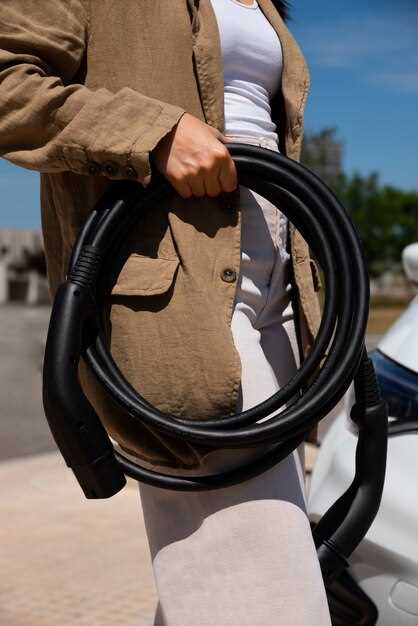
Tuning and modifying high-performance vehicles is a common practice among automotive enthusiasts. One option that garners significant attention is turbocharging, a method that can dramatically enhance a car’s power output without a complete engine overhaul. For owners of Birkin cars, known for their lightweight design and spirited performance, the decision to add a turbocharger may seem appealing. However, this modification comes with its own set of advantages and drawbacks that must be carefully weighed.
On one hand, the primary benefit of turbocharging lies in its ability to increase horsepower and torque, allowing your Birkin to achieve impressive speeds and acceleration. The additional power can transform the driving experience, making it more exhilarating on the track and the road alike. Furthermore, turbochargers can improve fuel efficiency by allowing smaller engines to produce more power, potentially making your performance machine more economical in the long run.
Conversely, there are significant downsides to consider. Turbocharging can lead to greater engine wear and tear due to the increased stress placed on internal components. Additionally, the complexity of turbo systems may introduce new maintenance challenges. There is also the potential for lag, which could detract from the immediate throttle response that many enthusiasts appreciate in their Birkins. Understanding these pros and cons is crucial for any owner contemplating this modification.
Impact of Turbocharging on Performance and Speed

Turbocharging significantly enhances the performance and speed of a Birkin car by increasing engine efficiency and power output. It works by forcing more air into the combustion chamber, allowing for a denser air-fuel mixture. This leads to a more powerful combustion process, resulting in higher horsepower and torque.
One of the primary advantages of turbocharging is the ability to generate additional power without increasing engine displacement. This means that a smaller, lighter engine can achieve performance levels comparable to that of a larger, naturally aspirated engine. Drivers can experience improved acceleration and faster response times, particularly at higher speeds.
Turbocharged engines also tend to achieve better fuel efficiency under various driving conditions. The increased air intake enables more complete combustion, which can lead to reduced fuel consumption. This is particularly beneficial in high-performance applications where maintaining efficiency alongside power is critical.
Moreover, turbocharging can positively influence overall speed capabilities. With the enhanced power output, Birkin cars equipped with turbochargers can achieve higher top speeds and better performance on the track. This addition allows for a more exhilarating driving experience, fulfilling the expectations of speed enthusiasts.
However, the impact of turbocharging is not solely positive. The increased complexity of turbocharger systems may lead to higher maintenance costs and potential reliability issues. Additionally, turbo lag, the delay between throttle input and increased power, can affect the immediate responsiveness of the vehicle.
Despite these potential drawbacks, the performance gains from turbocharging often outweigh the negatives. For many drivers, the combination of enhanced speed, improved efficiency, and exhilarating performance makes turbocharging an appealing upgrade for Birkin cars.
Cost Analysis: Installation, Maintenance, and Fuel Efficiency

When considering the turbocharging of a Birkin car, the initial expense can be significant. Installation costs can vary widely depending on the specific engine model and the complexity of the turbo system. On average, the price for a professional installation ranges from $1,500 to $5,000. This includes the cost of the turbocharger unit, additional parts such as intercoolers and piping, and labor fees. It’s crucial to factor in potential modifications to the engine management system, which may add another $500 to $1,500 to the total cost.
Maintenance plays a vital role in the overall cost analysis after installation. Turbocharged engines generally require more frequent oil changes and the use of high-quality synthetic oils to handle the increased heat and pressure. Users should expect to pay approximately 20% more on oil changes and engine maintenance compared to naturally aspirated engines. Furthermore, turbochargers may require additional inspections and potential repairs over time, particularly in high-performance applications, which can also result in increased maintenance costs.
Fuel efficiency is often a significant consideration when evaluating the financial impact of turbocharging. Turbochargers can improve engine efficiency, as they allow a smaller engine to produce more power without sacrificing fuel economy. In many cases, owners may experience improved miles per gallon (MPG) when driving conservatively. However, aggressive driving can counteract these benefits, leading to higher fuel consumption. Overall, the potential for better fuel efficiency can lead to savings over time, but it is essential to balance driving habits and expectations to realize these benefits fully.
Long-Term Effects on Engine Longevity and Reliability
Turbocharging a Birkin car can significantly enhance its performance, but it also raises important considerations regarding the long-term effects on engine longevity and reliability. When a turbocharger is added, the engine operates under increased stress due to higher pressures and temperatures. This added strain can lead to accelerated wear and tear on various internal components.
One of the primary concerns is the increased thermal load on the engine. Turbochargers generate heat, which can affect engine oil viscosity and lead to faster degradation of oil quality. Over time, this can result in insufficient lubrication, potentially causing critical engine components such as bearings and pistons to wear out more quickly. Regular oil changes and the use of high-quality synthetic oils can mitigate some of this risk, but they require disciplined maintenance practices.
Another factor influencing longevity is the potential for turbo lag and its impact on driving habits. Drivers may adapt to the turbocharged performance by frequently pushing the engine to its limits. This aggressive driving style can exacerbate wear on the engine, particularly if the engine is not properly warmed up before heavy acceleration. Consequently, maintaining a balanced driving approach is essential for preserving engine health over the years.
Moreover, the reliability of supporting components such as cooling systems, fuel delivery, and intercoolers becomes critical in a turbocharged setup. These systems must be upgraded or maintained alongside the turbocharger to ensure they can handle the increased demands of a forced induction engine. Neglecting these components can lead to failures that compromise engine longevity.
Ultimately, while turbocharging a Birkin car can deliver exceptional performance gains, it is essential to consider the potential long-term effects on engine longevity and reliability. Proper maintenance, careful driving practices, and the right upgrades can help ensure that the benefits of turbocharging do not come at the cost of engine durability.











